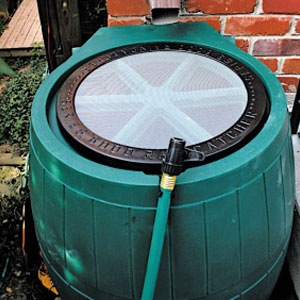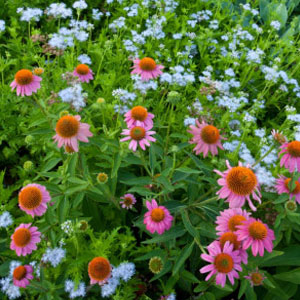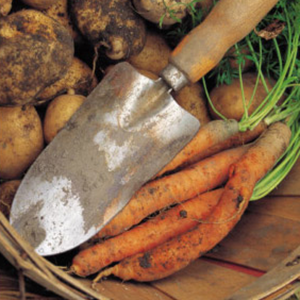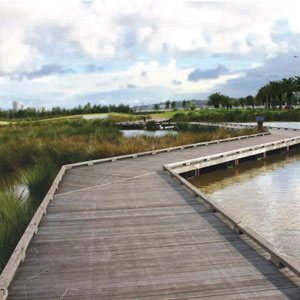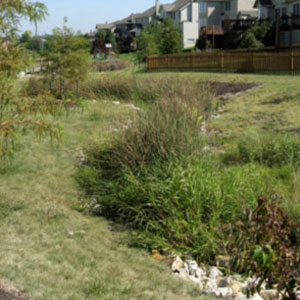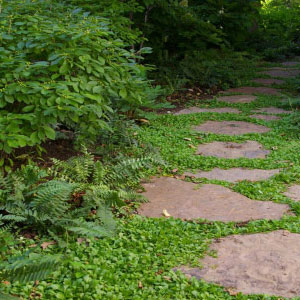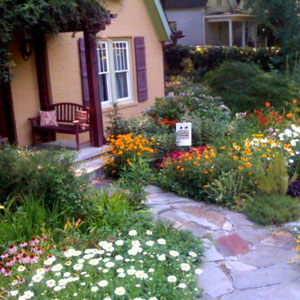
A sustainable landscape in Atlanta, Georgia. Image credit: Geraldine Laufer
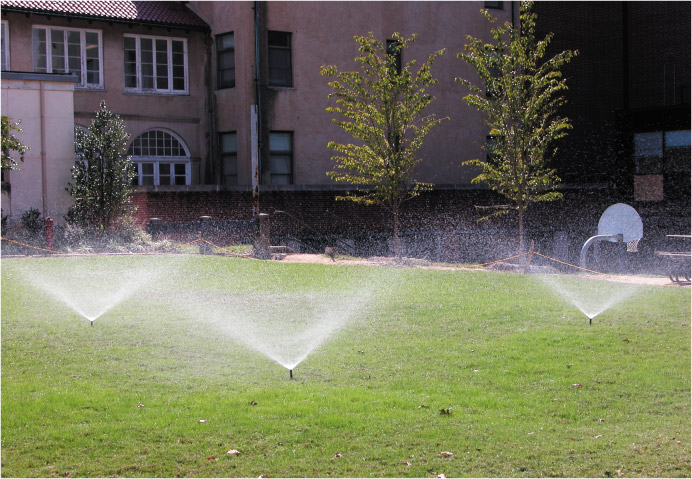
Watering by hand conserves more water than sprinkler systems like these. Image credit: Wikipedia Commons
Create a Water-thrifty Landscape
Irrigate only when plants need water.
How often you water depends on a number of factors, including soil and vegetation type, whether or not the plants are established, the season, and weather conditions. Homeowners should avoid irrigating on a fixed schedule that does not reflect these factors. Frequent, shallow watering leads to weak, shallow-rooted plants. Less frequent, deep watering encourages roots to grow deep, and the soil stays moist longer. Applying water in two or more short cycles will encourage infiltration and reduce runoff.
Chose the best time of day to irrigate.
Sunny or windy conditions increase evaporation and the loss of water. The most favorable conditions for irrigation are typically in the early morning hours.
Use a rain gauge and/or soil moisture probe.
A variety of relatively simple tools can help gardeners determine when to water. The simplest and most inexpensive is a rain gauge to measure weekly rainfall. Soil moisture probes employing different technologies are commercially available at varying prices. They measure the moisture level of soil, giving a more precise indication of how much, if any, water plants require. Rain gauges and soil moisture probes should be used in conjunction with basic knowledge about how much water various parts of the landscape require. For example, vegetables generally need more than established woody plants. And even edible plants require less water when it is overcast and relatively cool than when it is sunny and hot.
Water by hand.
According to an American Water Works Association Research Foundation study, manual watering with a hand-held hose conserves more water than other irrigation methods. If in-ground systems are required, consider a drip system; these use the least amount of any automatic system—but still 16 percent more than watering by hand. In-ground spray systems used 35 percent more water than hand watering, and an automatic spray system used 47 percent more.
Use the latest irrigation technology.
To maximize efficiency, install climate-based controllers such as sensors that prevent the irrigation system from turning on during and immediately after rainfall. Even better are sensors that activate irrigation only when soil moisture drops below a predetermined level. So-called “smart” or weather-based irrigation controllers take into account a range of factors including temperature, rainfall, humidity, solar radiation and soil moisture levels to determine when supplemental water is necessary. As with all technologies, water conserving irrigation systems and devices must be installed and operated correctly in order to be truly effective.
Keep an eye on the irrigation system.
Regularly check irrigation equipment for leaks or breaks. Adjust irrigation equipment and schedules to address changes in the landscape and seasons. Monitoring the amount of water used by the irrigation system will help flag any leaks or breaks within the system and will encourage conservation efforts.

